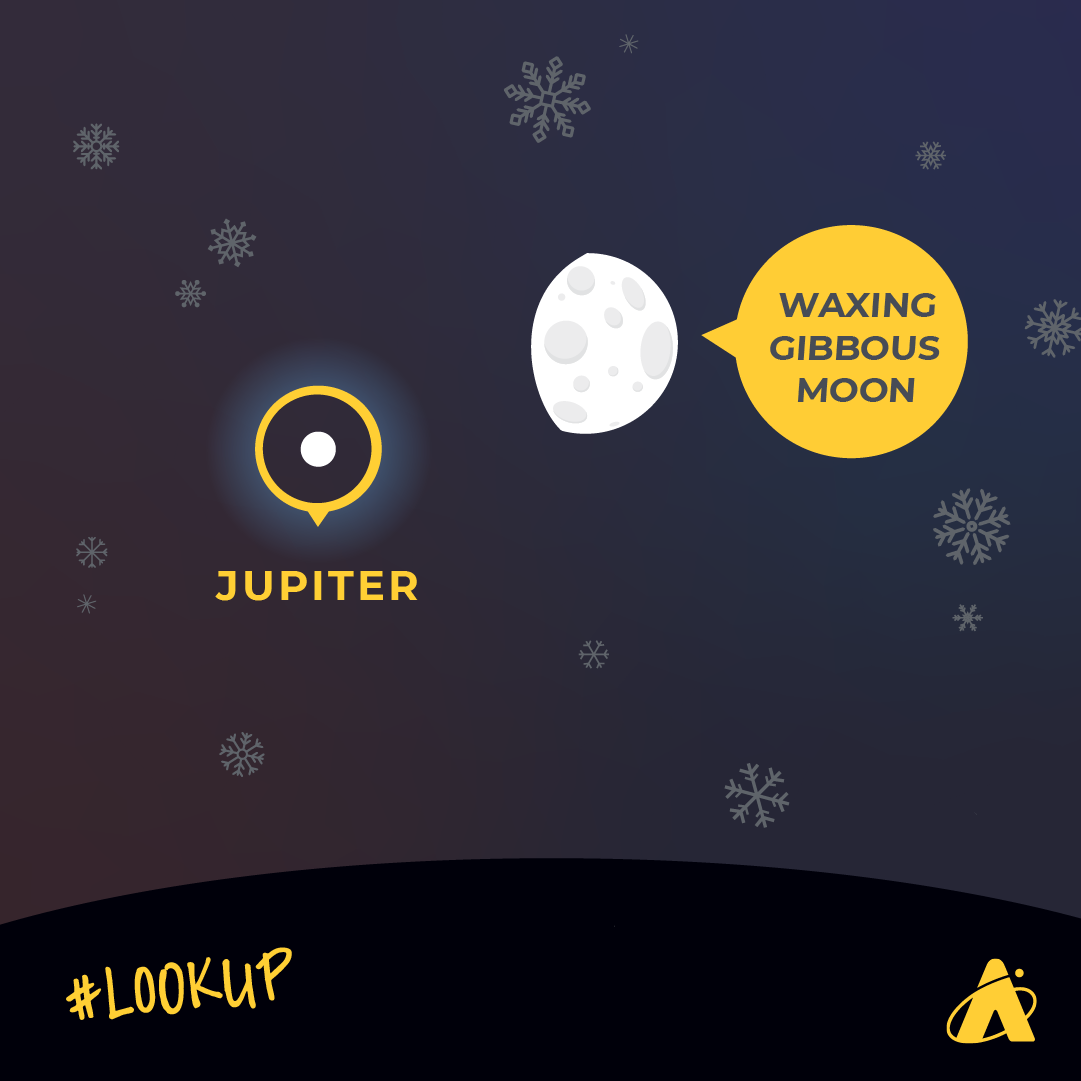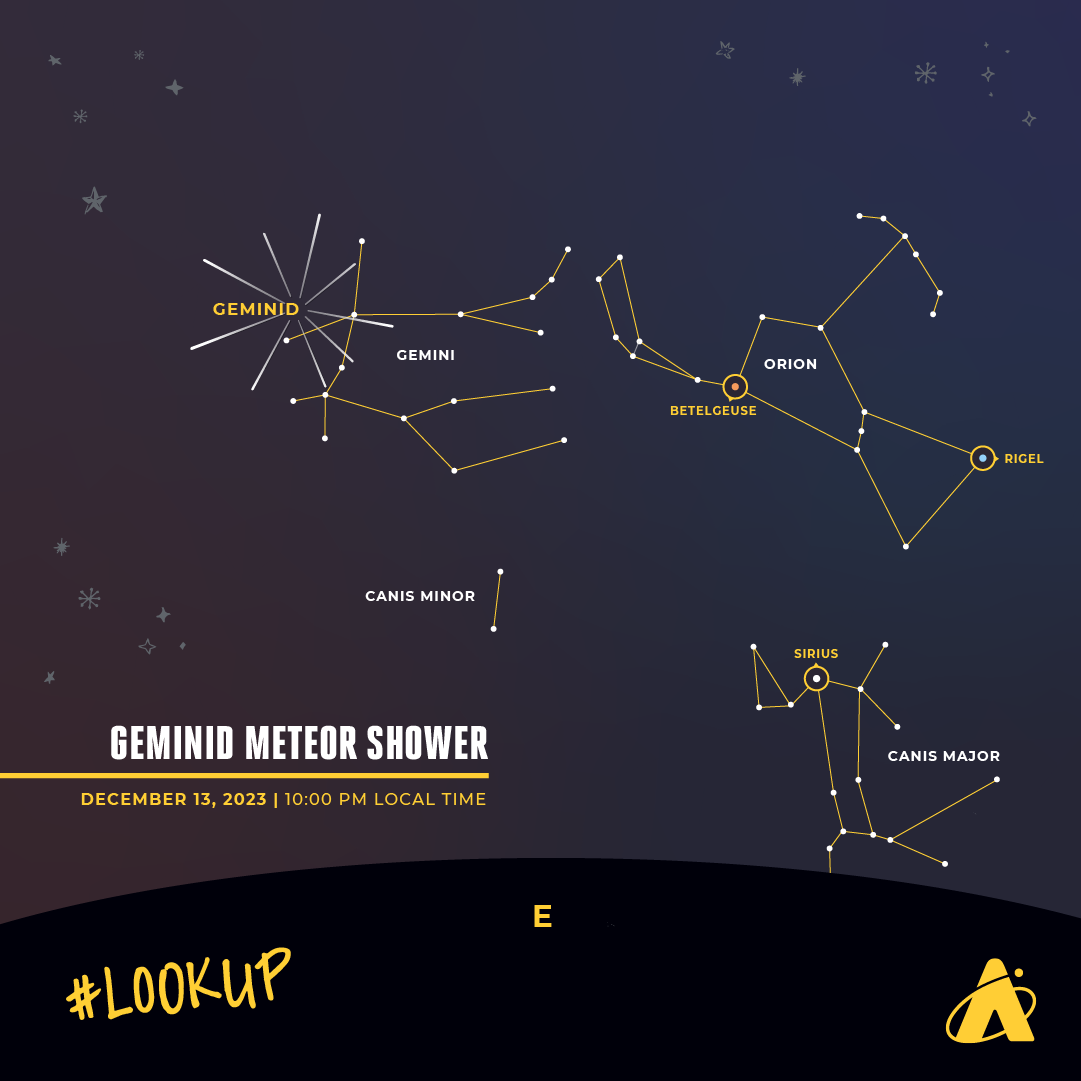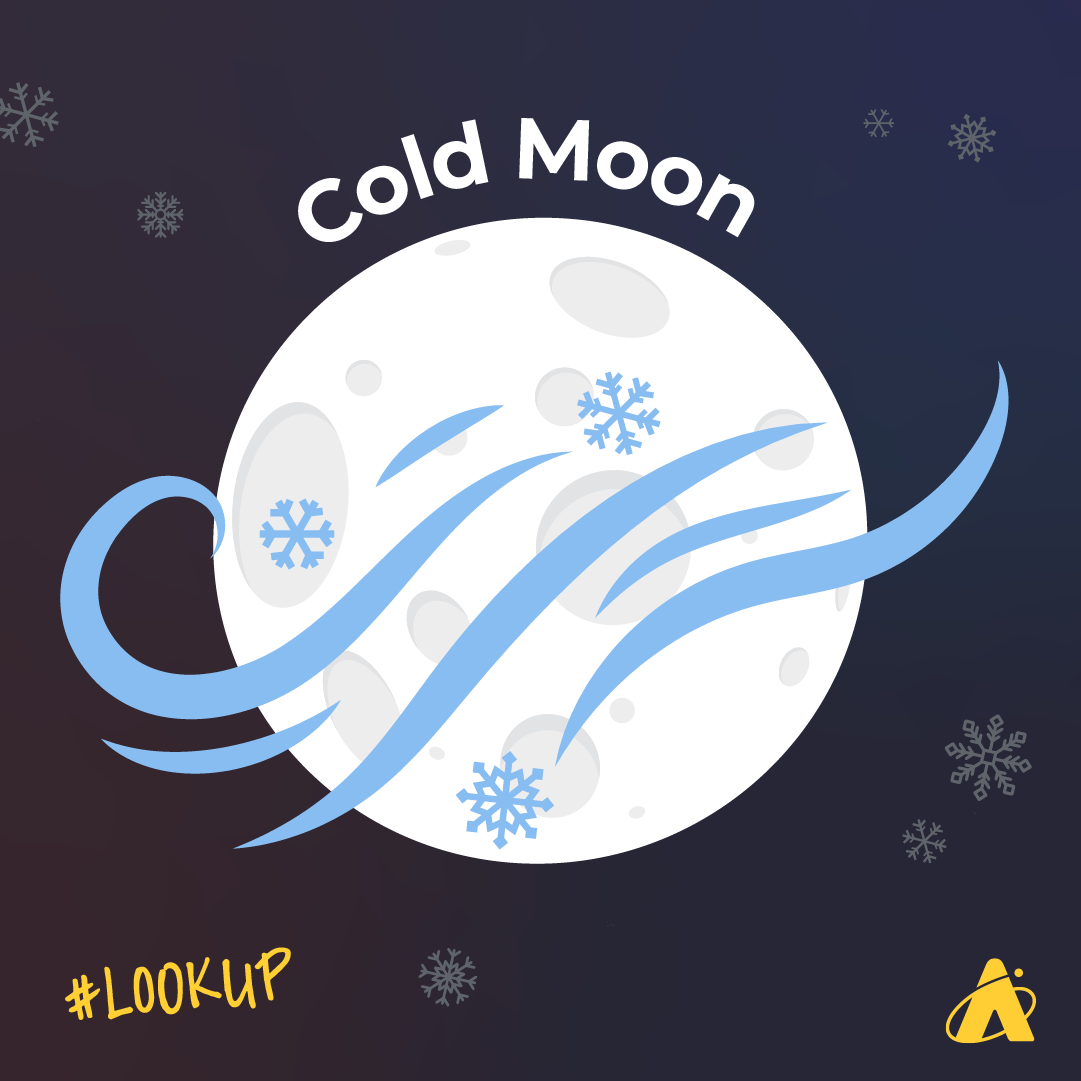Adler Skywatch: December 2023

Header Image: A winter landscape where the Sun shines through branches of a frozen tree, during sunset on the winter solstice.
We’ll get the shortest days and longest nights of the year this month, December 2023.
Winter Solstice

In December, the Sun is up for fewer than 10 hours a day in the Chicago area. It rises as late as 7:18 am, and sets as early as 4:19 pm. That’s because the winter solstice in the northern hemisphere occurs this month, on December 21 at 9:27 pm.
The winter solstice is the day when the Sun’s daily arc across the sky is as low as possible, so it’s not in the sky as long. On that date, the Sun is in the Chicago sky for only about nine hours and eight minutes. But take heart—by December 31, the Sun is up for a few minutes longer than it was on the solstice, and will keep gaining time above the horizon over the next six months.
Bright In The Winter Night Sky
Shortly after the Sun sets, the bright planet Jupiter may already be visible in the east, shining in early-evening twilight. At the start of the month, it’s low in the east, but later in the month it gets about 40 degrees up in the east-southeastern sky at sunset. The evenings of December 21–22, Jupiter will appear near a waxing gibbous Moon. Jupiter sets in the west-northwest around 4:00 am early in the month, and around 2:00 am by month’s end.

Furthermore, about 40 minutes after sunset this month, look about 35 degrees up in the southern skies to see the planet Saturn. At the start of the month, it’s nearly due-south. As the evenings pass, Saturn moves further west, and by month’s end, it will appear closer to the southwest sky. The night of December 17, a waxing crescent Moon appears very close to Saturn. It sets in the west-southwest around 10:00 pm at the start of the month, and around 8:30 pm by month’s end.
The brightest planet, Venus, is low in the east-southeast around 4:30 am in December. Its brightness may make it visible as high as 30 degrees in the southeast sky just before the Sun rises.
Mars and Mercury appear too close to the Sun in the sky to be readily visible in December 2023.
Get Ready For The Geminids

If you don’t mind being outside in the nighttime cold, the Geminids meteor shower is one of the most prominent of the year. This year, it peaks the evenings of December 13–14, right around the new Moon, which allows for darker skies and better chances to see meteors!
The radiant—the point where the Geminid meteors appear to emanate from—is near Pollux and Castor, the two brightest stars in the constellation Gemini. But keep in mind that Geminids will go all over the sky from the radiant point. Under very dark, very clear skies, up to 100 meteors per hour can be expected (with far fewer in light-polluted locations). To get the best possible view of the Geminids, find a spot far from light, face east, and give your eyes at least 20 minutes to get acclimated to the darkness. You’ll likely want to bundle up in layers, too!
Moon Phases

Last Quarter Moon: December 4
New Moon: December 12
First Quarter Moon: December 19
Full Moon: December 26
Please note: these descriptions are for the Chicago area, using Central Standard time.
Subscribe To Skywatch Wednesday This December
Tour the sky with the Adler Planetarium’s Theaters Manager, Nick, in Skywatch Wednesday. Nick uses cutting edge visualizations, NASA images, and astrophotography to show you what you can see in the night sky throughout the year.
Check out our latest episode for your 2023 guide to stargazing this autumn!
Learn From Our Astronomy Educators
Watch exclusive live episodes of Sky Observers Hangout this December! Learn how to observe upcoming cosmic happenings, enhance your astrophotography skills, and see celestial objects through a telescope virtually with our astronomy educators.
In our latest episode, Michelle and Hunter guide you through the annular solar eclipse on October 14, 2023, and help you prepare for the next solar eclipse on April 8, 2024!







